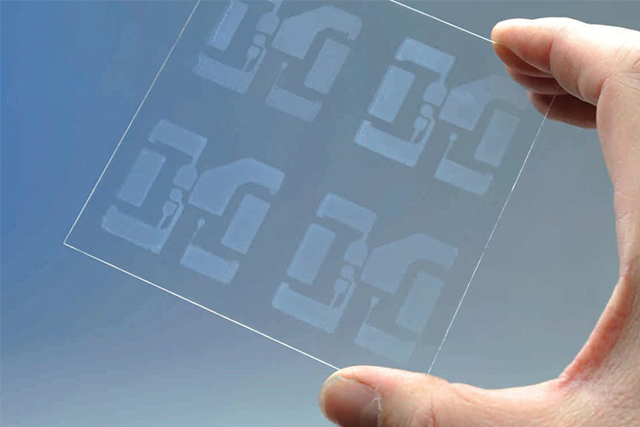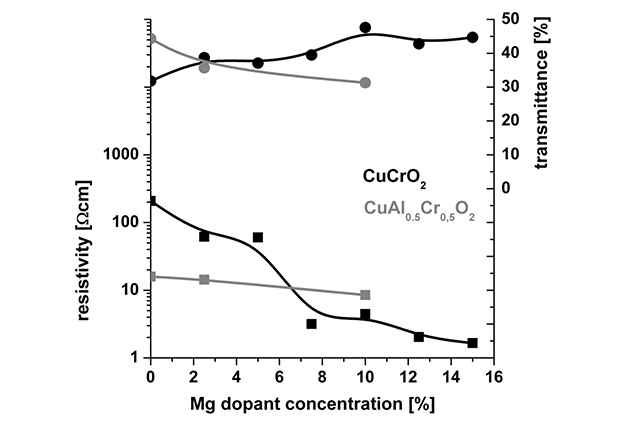In optoelectronics, mainly indium tin oxide (ITO) and aluminium-doped zinc oxide (AZO) are used as transparent conductive materials. For large area depositions, wet chemical methods can hardly compete with e.g. sputtering techniques in terms of conductivity. However, when it comes to the direct production of lateral structures such as transparent conductive tracks, coating solutions from ITO or AZO can be printed directly. Pad printing and inkjet processes are suitable for this purpose.
Alternatively, transparent conductive layers can also be realized by composites of hybrid polymers with silver nanowires.

